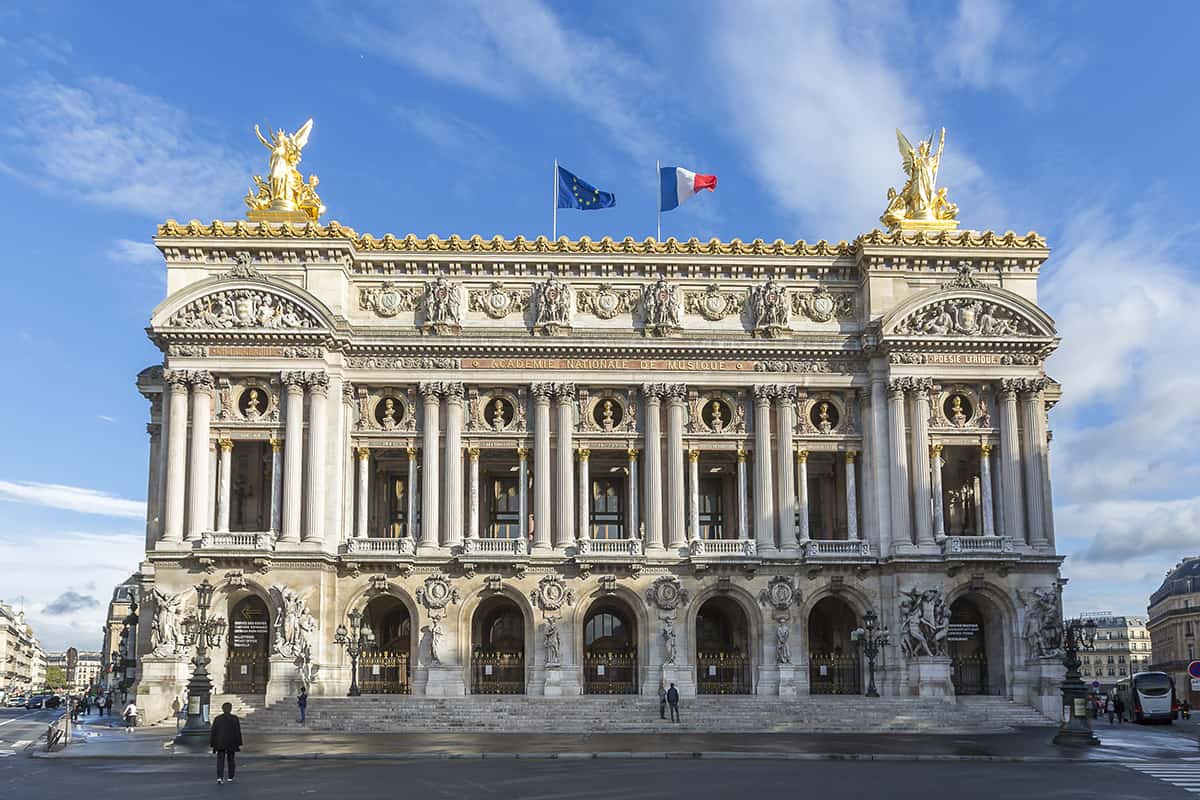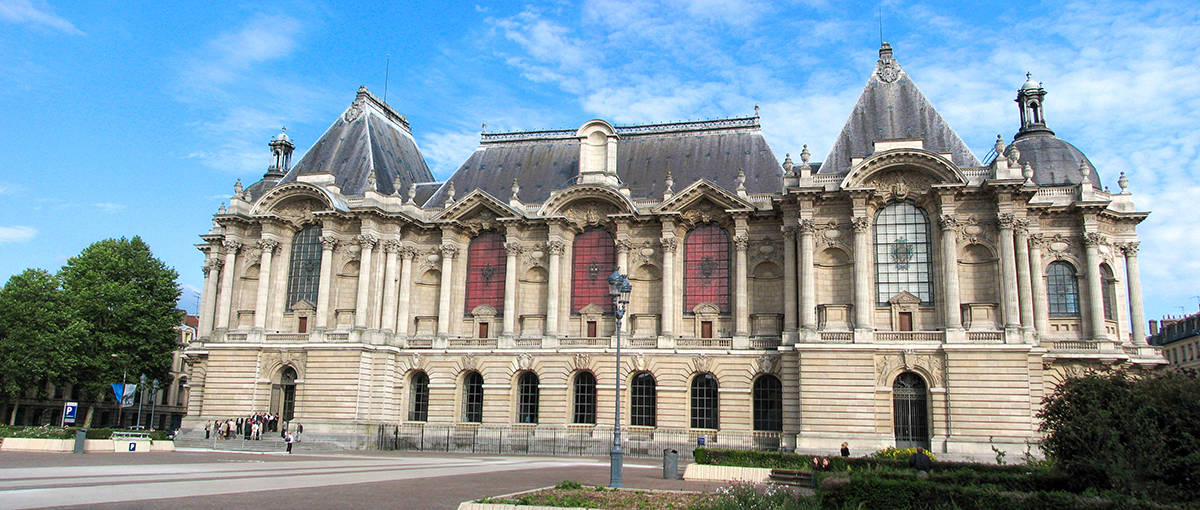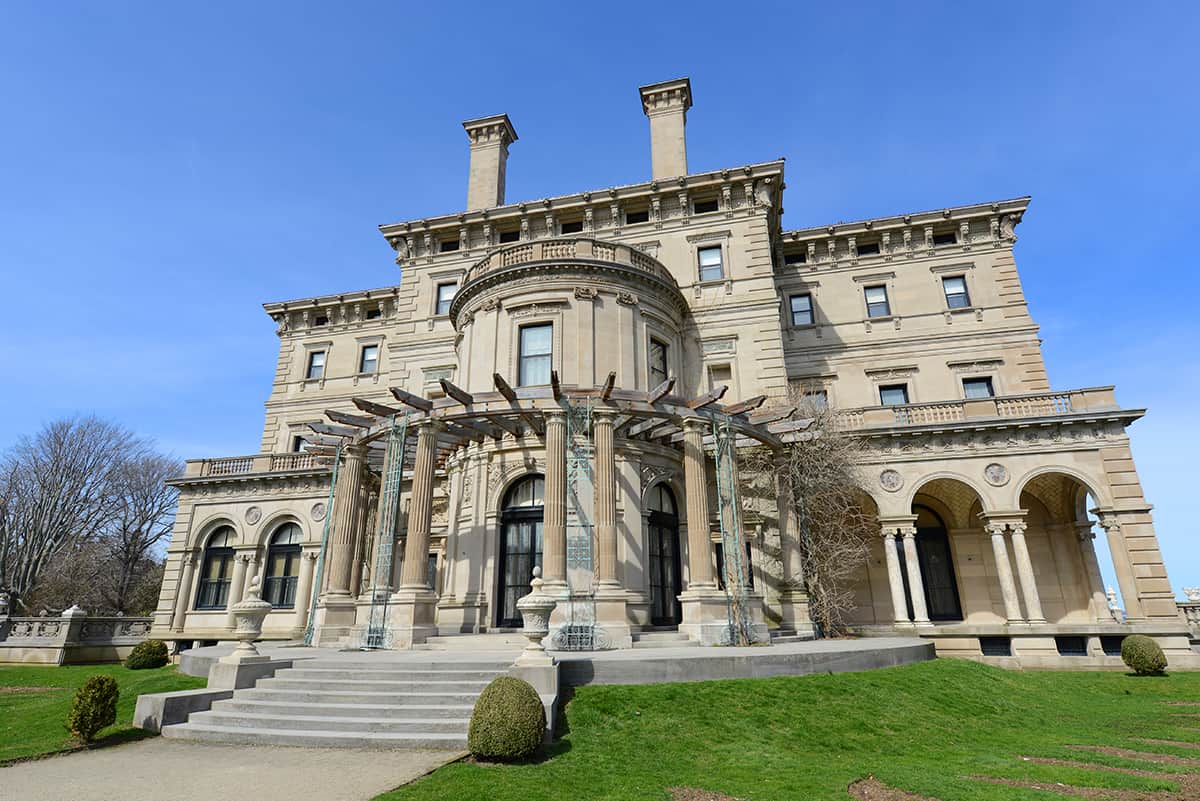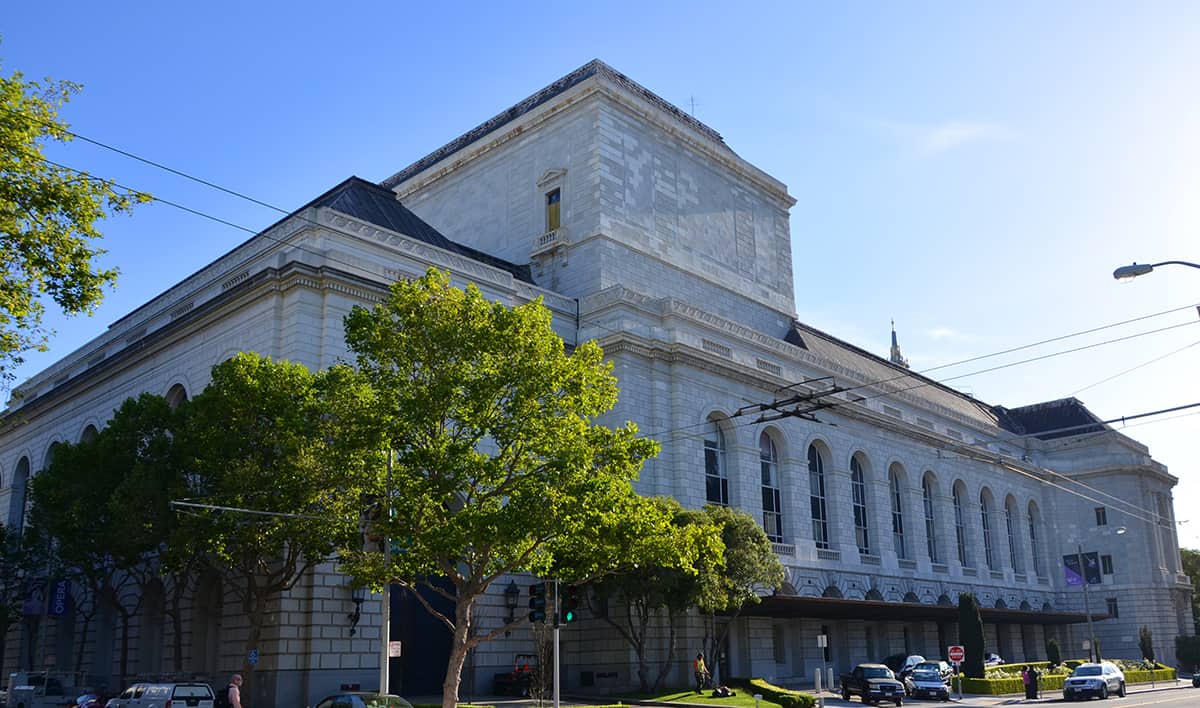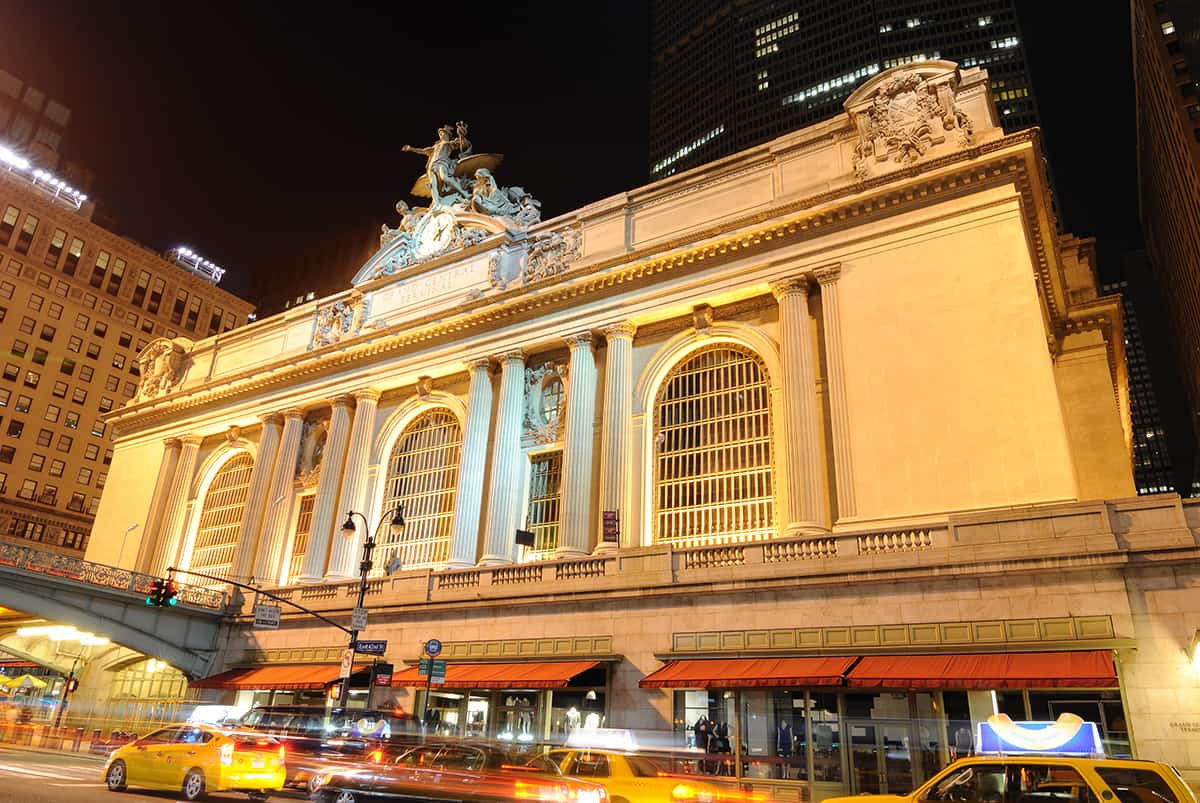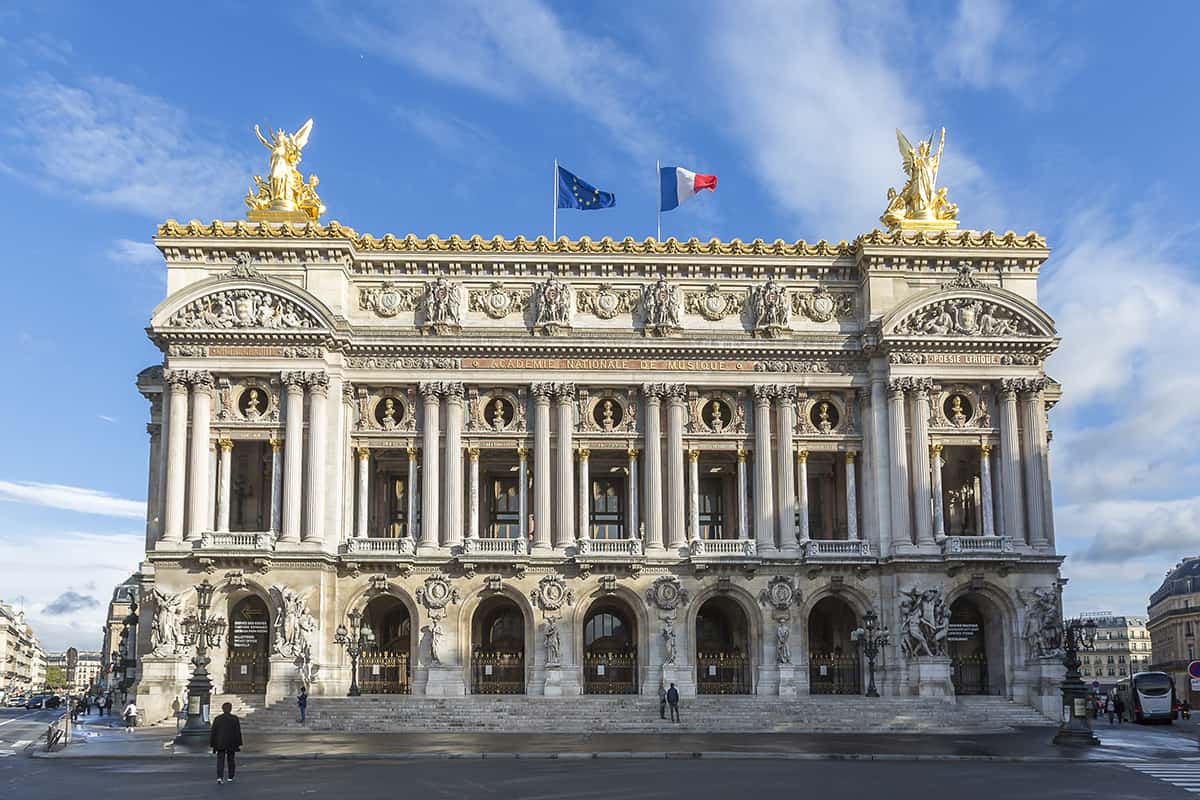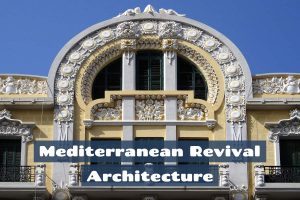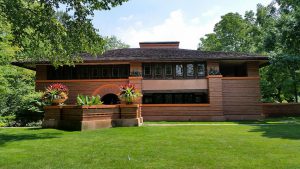The dramatic Beaux-Arts architecture is an easily identifiable building style that originates in 19th century France. The words opulence and drama are synonymous with this architectural style.
But there is a lot more to this style of architecture than meets the eye. Let’s explore exactly what it is, the background of the style, the defining characteristics and some famous examples in the US and abroad.
What is Beaux-Arts Architecture?
Also referred to as Classical Revival style, the Beaux-Arts architecture can simply be described as the eclectic version of Neo-classicism. This style blends classical architecture from ancient Rome and Greece with Renaissance architecture. The Beaux-Arts became part of the US Renaissance movement in the late 19th century.
One word that best describes the Beaux-Arts buildings is maximalism. This is due to the fact that the grand architectural style of Beaux-Arts has taken its inspiration from the artistic Roman and Greek architecture.
Think of this style as a charismatic flair of the Italian and French Renaissance paired with ancient Greek and Roman buildings. And to add even more class to this combination, there is as much gothic influence as orthodox features that have been adapted over time.
In the US, the Beaux-Arts architecture is rarely seen in residential homes. When you walk through the big cities’ neighborhoods, you’ll come across large museums, opera houses, post offices, banks, courthouses, libraries, railway stations, palaces and many government buildings in the Beaux-Arts style. The grandiosity of these public buildings is enough to turn heads and arouse curiosity.
In fact, almost every corner of Chicago, New York or Washington D.C is blessed with a Beaux-Arts-style building. The dominant style of this architecture in the US is clearly visible in many streets of large cities. The Beaux-Arts emerged in these US cities between the late 19th century and the beginning of the 20th century, and today, most of the buildings are open to the public as tourist attractions.
The Origin of Beaux-Arts Architecture
The 1700s and 1800s saw the birth of Beaux-Arts architecture in France. This style evolved from those decades of Neo-classicism, which originated from the School of Fine Arts in France, where many renowned architects graduated from.
The Neo-classical architecture took its inspiration from ancient Rome and Greece, where demand for formal, maximalist designs were high. This movement was later transformed into an even more grand design in the form of Beaux-Arts architecture.
As we mentioned earlier, the Beaux-Arts architecture originates from France as the French words Beaux-Arts mean Fine Arts in English. This style is taught in one of the oldest schools of design and architecture in Paris and not all the architects who studied at that school were French.
The first American graduates from that school were Henry H Richardson and Richard Morris who brought the Beaux-Arts architecture to the US in order to inspire other architects. This is how the Beaux-Arts style became synonymous with the US Renaissance movement.
Throughout the late 19th century and the beginning of the 20th century, the world witnessed a great industrial evolution. It was during this period that the American Civil War took place and the US became a superpower.
At the same time, US architecture officially became licensed. French architecture inspiration was brought to the US and the Beaux-Arts style gained prominence during this era. The Beaux-Arts architecture was reserved for the wealthy because of its grandeur design, and mostly found in urban neighborhoods, where the rich and famous want to make a statement.
While the Beaux-Arts architecture became highly sought when it first arrived in the US, its popularity didn’t last long. In fact, the Beaux-Arts architecture’s reign only lasted between 1885 and 1925 as the style started to fade, mainly due to the great hardships that the US had to endure after the war.
This style eventually led to the famous American Dream suburbs with large, ornately designed homes with spacious gardens. However, because of the grand appearance of these buildings, they were more preferred as public buildings, including museums, palaces with landscaped gardens and government buildings.
The most notable Beaux-Arts architecture can be seen in Washington D.C, where many of the nation’s prominent and symbolic buildings are located.
Key Characteristics of Beaux-Arts Architecture
Along with sculptural decoration, Beaux-Arts architecture employs Italian and French baroque styles to blend in with its realism finish. The highly dramatic detailing and bold sculptural pillars with elaborate cornices define the Beaux-Arts architecture.
Beaux-Arts is mainly characterized by grandiose symmetry and elaborate ornamentation. It’s no wonder that you see this type of architecture in public libraries, post offices, office buildings, and railway stations. The most typical features of this grand design include tall columns, balustrades, cornices, and pediments. The stone exterior of these buildings is huge and usually polished with decorative medallions or sculptures.
The aforementioned characteristics are only an introduction to what Beaux-Arts Architecture is all about. Continue reading the article to learn more about this fascinating architectural style…
Identifiable features of Beaux-Arts architecture at a glance:
- Low-pitched or flat roof
- Decorative textured walls or patterns
- Rustic stonework on the first floor
- Imposing and elaborate decorative architecture inspired by French and Italian Renaissance
- Arched doors and windows with pediments
- Formal symmetrical exteriors
- Classical Greek and Roman details, such as cornices and pillars
- Pavilions
- Use of natural materials, such as marble staircases, brick facades and stone walls
- Elevated first floors
- Sculptural decoration, statues or figures on the building’s facade
- Grand entryways with open interiors and large staircases
- Formal, landscaped gardens
- Interior plasterwork and textured ceilings and oak furniture which were reproductions of Italian and French Renaissance
Stately Entrances
In Beaux-Arts style architecture, the entrances are usually stately, with an elevated first floor. These buildings are rarely built directly on the ground as the architects often design them to stand a few feet higher than the ground level in order to raise the eye. The foundations are almost above head level, which adds to the impressiveness of the building. The front doors are larger than average and usually covered in ornaments.
Arched Doorways and Windows
You will hardly find a Beaux-Arts style building without arched windows or doorways. This is a defining feature of such homes, whether they are rectangular or triangular arches.
Majestic Staircases
Grand staircases are quite common in Beaux-Arts style buildings. These staircases are often adorned with wrought iron balusters and railings that are always impressive to look at. In Beaux-Arts style architecture, positive first impressions are of utmost importance, hence the staircases are all about showing off the creative taste of the architects and homeowners.
Two or More Stories
All Beaux-Arts style buildings or homes must have a minimum of two stories. Some even have up to five stories! The idea is to make the building as impressive and classy as possible by decorating each floor lavishly.
6 Famous Examples of Beaux-Arts Architecture
The Breakers Mansion, Newport, Rhode Island
This famous mansion was constructed in 1893 in Newport. It became a national monument a century later and took its inspiration from the Italian Renaissance architecture. The summer mansion has 70 rooms and was designed by Richard M Hunt, who was a graduate architect of Beaux-Arts in France.
The War Memorial Opera House in San Francisco
The opera house in San Francisco was the last ever Beaux-Arts building of its kind constructed in the US. The building was originally a war memorial to pay tribute to those who fought in the first world war. It features large columns, archways and a low-pitched roof with a balcony on the second floor, which are the typical characteristics of Beaux-Arts architecture.
The Grand Central Terminal in New York
This commuter rail terminal in Manhattan, NYC, was built in 1913. The exterior arched windows paired with large pillars and ornate detailing are the pivotal characteristics of the Beaux-Arts style. Inside this rail terminal, you’ll find vaulted ceilings and huge staircases.
Palais Garnier in Paris
As one of the most famous Beaux-Arts style architecture in Paris, the Garnier Palace looks more like a temple than a palace. It was built in the mid 1800s and is currently used as an opera house.
Musée D’Orsay in Paris
As a world-renowned museum, and a former railway station, the Musée D’Orsay was built in the early 1900s and is a popular tourist attraction. The museum is primarily home to French art, including photography, sculptures and paintings.
Library of Congress in Washington D.C
Completed in 1897, the renowned Library of Congress in the US capital was founded in the 1800s. The vast collection of books that we see displayed in this library today once belonged to Thomas Jefferson. This classic building took its architectural inspiration from the outstanding Opera Garnier in Paris, France.
